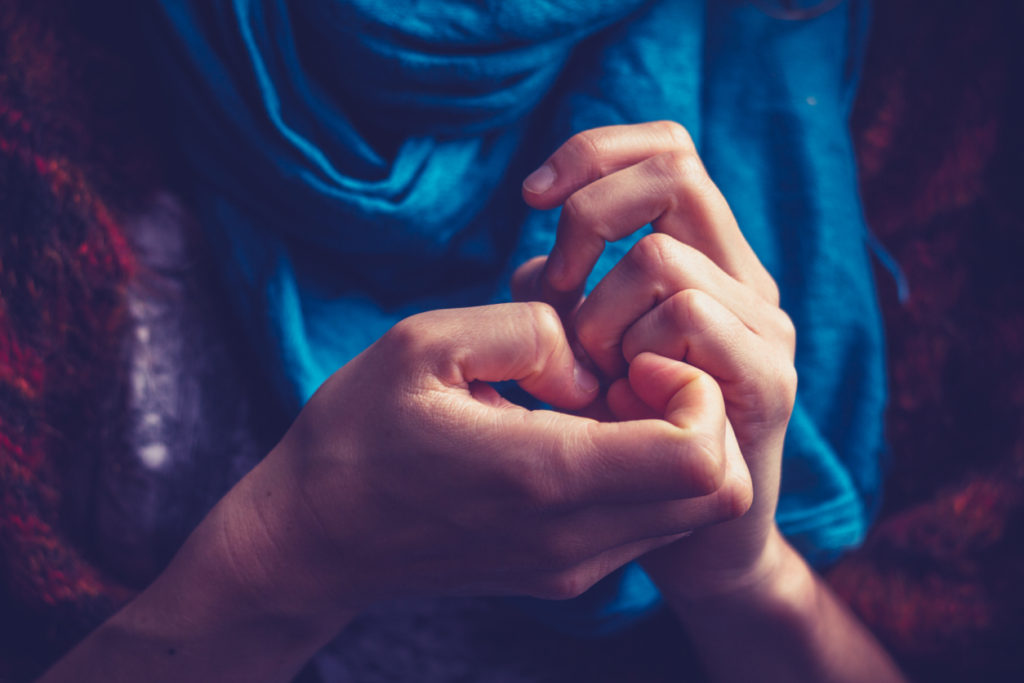
A month or two ago I was skiing with my two young kids and a ski instructor. We were at a chairlift and had to divide into pairs. I remember a slight contraction – how was this going to work and would I be navigating a meltdown. I watched in marvel as my six year old daughter trotted off happily with Libbie, the ski instructor, and chatted to her all the way up the mountain. My daughter’s wiring was evidently very different to my own. As a kid and teen I never actually saw myself as someone who had social anxiety, or even anxiety for that matter. I just happened to have 100s of memories of my body contracting and avoiding being stuck talking to people I didn’t know well. I dreaded being left alone with people who weren’t close friends and having to make, you know, the small talk.
1. Acknowledging What’s Happening On The Inside (Seems Obvious But Often Isn’t)
The first step in transforming social anxiety is actually acknowledging we have it. This may seem obvious but actually it isn’t. Unless we have parents who are emotionally attuned, and help us put names to our feelings, we usually shift into “survival mode” and come up with our own adaptive strategies of how to get through the moment in front of us. Looking back I can remember many times when I would just lie about how I was getting home because I did not want to be stuck with a fellow human for what I imagined would be an excruciating 10 minute walk to the bus or the tube stop or whatever it was. I would rather make up some other story than face chit chatting for a whole car ride.
Looking back, what was so painful about this dance wasn’t the anxiety itself, it was that I hadn’t even admitted to myself that I was anxious. And because of that I couldn’t talk myself through the situation with a ‘hey kiddo, it’s totally normal to be feeling tense, you’re doing great, keep breathing and let’s see if we can ask this person a few questions”. The “pretending-to-ourselves-that-everything-is-fine-in-spite-of-experiencing-high-degrees-of-tension” is massively exhausting and draining as well as lonely. Plus it’s hard to actually connect with people from that place.
2. Talking To Somebody Else About What’s Going On (yup, super vulnerable)
Healing social anxiety is often a matter of healing shame. And the quickest way to heal shame is to voice what’s happening. That might involve telling a therapist, a coach or a good friend. And at some point we can even practice voicing what’s happening out loud in the moment it’s happening (obviously use discernment here, that company-wide meeting may not be the time or place). A big turning point for me was in my 20s when I was at a training retreat for newbie psychotherapists. After a long session in the yurt (yes, this was California) we broke for dinner. I remember that moment when I realized the only space free at the dinner table was the one next to the faculty member/facilitator and could feel my stomach lurch. Ugh I would have felt much more relaxed sitting next to a fellow trainee.
I knew it was a choice point. I could either pretend everything was fine and kind of fake it (which I usually did). Or I could get really honest. I chose the latter. Of course the man was lovely – I can’t remember what he said. It wasn’t even about that. It was about me being able to have my own back and own what I was feeling (without judging or shaming myself) even in the face of somebody I admired. It was a monumental shift and I can honestly say a lot of my “social anxiety” fell away that day. Not because I magically became “un-awkward” but because I was willing to feel whatever my body was feeling and own it without apologies.
3. Social Anxiety In Remission – Top Three Tips
My husband was laughing the other day because he doesn’t see me as having issues talking to people. He was like “wait, you speak to strangers one-on-one every day and you totally love it”? I pointed out that in therapy I have a mandate and it’s my job to drop into deeper conversations (and to use what I’m feeling in my body to fuel that connection). That all feels fun and alive for me. It’s the floating on the surface that I find more challenging, though I think I’ve gotten pretty decent at that also.
Three things that have helped are the following:
1. Stop Filling the Silence: Empaths are typically highly attuned to their own feelings, as well as other people’s, and it’s easy to feel the need to “smooth things out” by filling difficult silences. But learning to breathe through that awkward moment is actually a useful skill. You can learn to place more of your focus on your inner body and pay less attention to managing the situation outside of you.
2. Like Yourself: The more you’ve done some inner child work, the easier it is to like yourself. This means liking all of yourself even the shy, awkward, unpopular, quiet parts of you. It’s not as big a deal to notice you haven’t said anything in the group conversation for the last 10 minutes when you actually like yourself.
3. Remember Everyone Is Human: It’s so easy to assume we have nothing in common with somebody and that being seated next to them for an hour will be tricky. This still happens to me but when I remember they’re human, and will have experienced a bunch of suffering by virtue of being human, I also remember some sort of connection is usually more than doable. And if it isn’t we’re back to breathing through the awkward silence 😉
As Brené Brown says, “stay awkward, brave and kind” out there.
